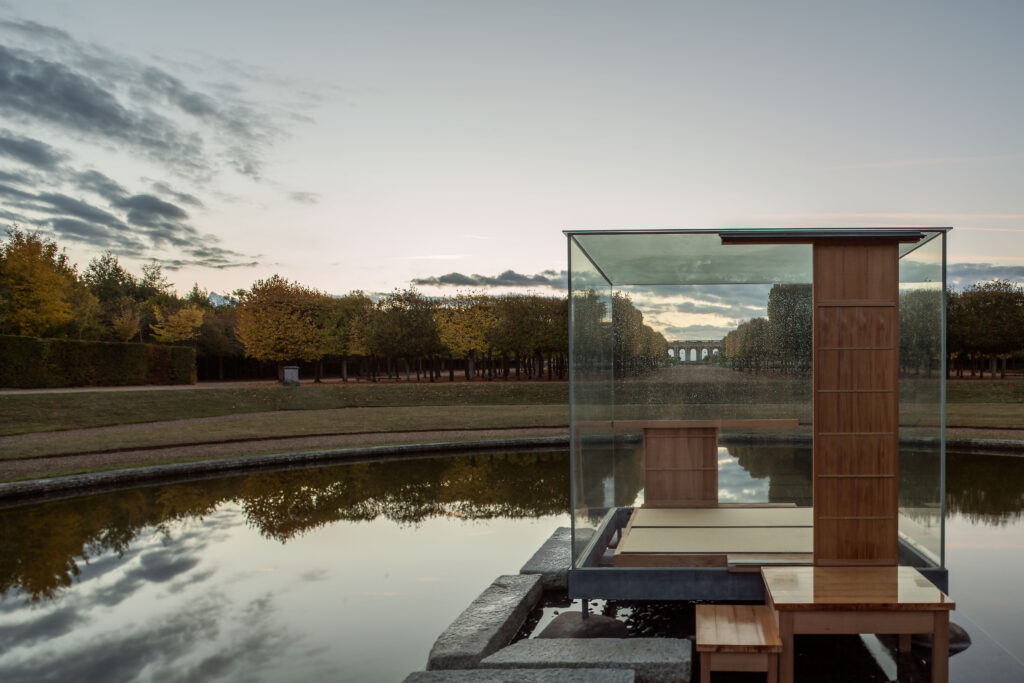
“The Old is New,” is not a paradox when it comes to Japanese artist Hiroshi Sugimoto (b.1948). Since discovering his Seascape series at a New York gallery years ago, photographs in B&W capturing the sea and horizons in a variety of locales across the globe, I became intrigued. Using an old fashioned camera to create long exposures, I’ve discovered that Sugimoto’s photographs are meditative, peaceful, and refreshing—so beautiful that you never get tired of looking at them, and just wish that you could hang one in your bedroom.
Sugimoto is not only a brilliant and innovative photographer, but as he writes in the introduction to the new monograph “Old is New,” he is a theater director, culinary expert, curator, and architect. At age 60, he co-founded the accomplished Tokyo-based architecture practice New Material Research Laboratory with Tomoyuki Sakakida (b. 1976) and their oeuvre and vision are presented in the new book, published by Lars Müller Publishers. Here, the two illuminate the notion that the old, the most traditional, the most familiar, is also the best place from which to depart when creating the new. Their commitment to rethinking the past and to connect past and present stands at the core of their agenda.
The two seek to develop new materials derived from traditional techniques, and this philosophy is fully delineated in their text. It is seen in their amazing projects – museums, private residences, tea houses, galleries, gardens – each, an exquisite expression of their strong connection to Japanese heritage, and each demonstrate the way in which Japanese traditional dwellings are kept alive in the 21st century. The depth of their knowledge, the way they constantly move between art and architecture through the essence and spirituality of things, the formative influences, and the aesthetic sense all form the backdrop of the projects. “Excellent architecture,” Sugimoto claims in the interview by curator-writer Fumiko Suzuki in the book, “is born out of the trinity of material, artisans, and designer,” and when all three come together, he believes, perfection is achieved.
I loved learning that the route to becoming engaged with architecture started for the untrained Sugimoto with a series of architecture photographs of 1997, where he traveled the world over to capture and identify the most important and significant examples of modernist buildings – The Eiffel Tower, Villa Savoye, Casa Batllo, Barcelona Pavilion. The series taught him that “modern architecture represented the first time that humanity was able to create architectural designs freely, unconstrained by past styles.”
As I was reading through the projects from all over the world and commissioned by those who adored the Japanese way of life, their ultimate beauty is evident through spectacular photographs. It reminded me why I fell in love with Japanese aesthetics from my first exposure. Wood, bamboo, stone, ceramics, paper—so simple and so defining and refined—elevated to art. The descriptions of the projects also give us glimpse into the secrets of Japanese design, the size of the rocks in the gardens, the connection with what was radical at one time and later became tradition. And through all of them, you sense the silence of beauty. The book is perfectly timed, as following the pandemic there is a strong urge to define people’s homes, and it certainly helps. It is a mandatory addition to any library.
Above: Enoura Observatory, ©Hiroshi Sugimoto/Sugimoto Studio.








